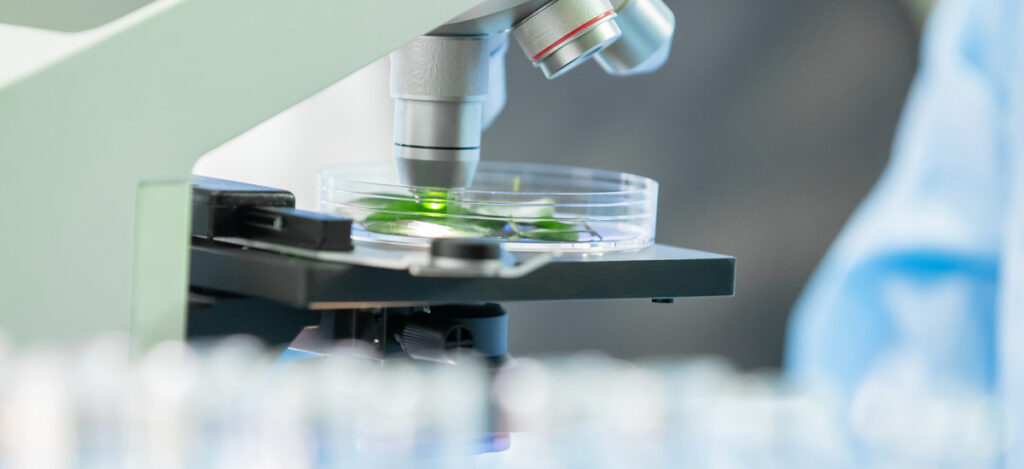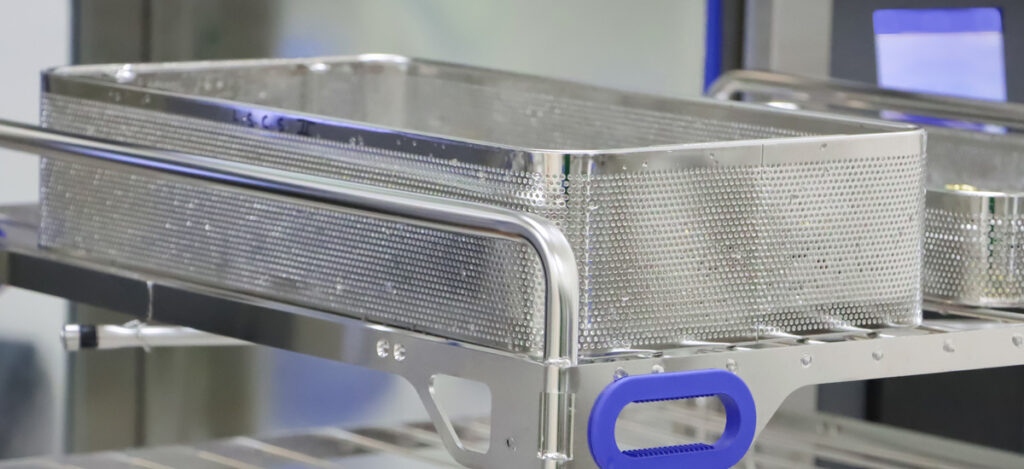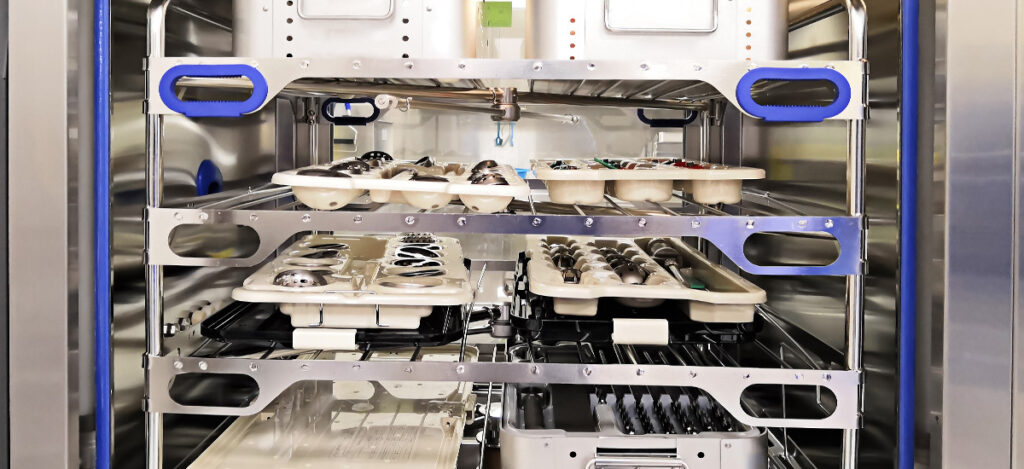Top 25 Aseptic Processes For Your Parenteral Product
What are aseptic processes?
Aseptic processes are methods or procedures that are undertaken in a sterile environment. The aseptic sterile environment is maintained through specialized equipment that prevents microbial material from technicians, raw materials, or machinery from contaminating medical devices or products.
The terms aseptic and sterile are not synonymous. While both sterile and aseptic products will prevent microbial contamination following use, the processes by which microbial contamination is prevented are different. The term sterile means a complete absence of viable microorganisms or microbes that have the potential to reproduce. Thus, sterile products are often chemically or heat sterilized after being placed in their final packaging. The chemical or heat sterilization kills any microorganisms inside the products (obtained during manufacturing and packaging). This chemical or heat sterilization process after final product packaging is known as terminal sterilization. However, an aseptic process prevents contamination by the exclusion of microorganisms. Though the definitions for aseptic and sterile are not the same, sterile is used interchangeably with aseptic. Indeed, many products labeled as sterile are manufactured by aseptic processing rather than terminal sterilization. Aseptic processes can vary in complexity from comparatively simple filling-sealing to lengthy manufacturing sequences for complex items, such as medical devices.

Top 25 Aseptic Processes To Validate For Your Parenteral Product
#1: Cleaning and disinfection of tanks and mixing vessels and transfer lines
Regular cleaning and sanitation of large manufacturing equipment are critical to keeping microbial levels low. Validation of transfer line cleaning for items such as tubes, pipes, chutes, or assembly lines is critical to keep microbes out of manufacturing processes consistently.
#1: Cleaning and disinfection of tanks and mixing vessels and transfer lines
Regular cleaning and sanitation of large manufacturing equipment are critical to keeping microbial levels low. Validation of transfer line cleaning for items such as tubes, pipes, chutes, or assembly lines is critical to keep microbes out of manufacturing processes consistently.
#2: Raw material bioburden and pyrogenic burden
Regular audits of sources for raw materials and validated methods for internal quantification of pyrogenic burden in raw materials or equipment is essential to keeping endotoxins out of aseptic processes.
#3: Raw material addition
Validated protocols for introducing new raw materials need to be set to limit microbial contamination before raw materials are used in the product processing stream. Raw material addition refers to both the same material from a new source or a new material entirely.
#4: Compounding and mixing
Enclosed or highly protected sterile areas must be used for compounding and mixing to ensure contamination does not occur during these processes.
#5: All product transfer steps
Like cleaning for transfer steps, verifying that product materials moving through tubes, pipes, chutes, or assembly lines do not contaminate the product or process is critical to keep microbes out of the manufacturing processes consistently.
#6: Product filtration (sterilization step) including microbial retention, product compatibility, and filter extractables
Filtration for sterilization is performed to remove residual microbes from the finalized product. Filters must be able to retain an appropriate quantity of microbes, be compatible with the product being filtered, and not leach extractables into the final product when used.
#7: Sterilization of all filters (liquid and gas)
Filtration is a process used to remove solids from liquids or gasses. All filters must be sterilized before use and between product batches as needed based on validation studies for preventing microbial exposure.
#8: Cleaning and sterilization of product contact surfaces, parts, vessels, lines, housings, all accessories
Regular cleaning and sanitation of surfaces, parts, vessels, housings, accessories, lines, or other items is critical to keeping microbial levels low during product manufacturing.
#1: Cleaning and disinfection of tanks and mixing vessels and transfer lines
Regular cleaning and sanitation of large manufacturing equipment are critical to keeping microbial levels low. Validation of transfer line cleaning for items such as tubes, pipes, chutes, or assembly lines is critical to keep microbes out of manufacturing processes consistently.
#9: Cleaning of all packaging components
Regular cleaning and sanitation of components for packaging (materials, equipment, etc.) are critical to keeping microbial levels low during product manufacturing.
#10: Cleaning and sanitization of cleanroom equipment, walls, floors, surfaces
Regular cleaning and sanitation of cleanroom equipment, walls, floors, and other surfaces is critical to keeping microbial levels low during product manufacturing.

#11: Operation of component handling and transport equipment, unscramblers, hoppers, bottle orienteers, star wheels, component bowls and tracks, conveyors, turntables
Equipment that migrates products and packaging elements through conveyors, turntables, star wheels, etc., must be appropriately functional to prevent halts inflow or manual maintenance that could increase the risk of microbial ingress during manufacturing protocols, procedures, manufacturing sequences, complex items, tubes, pipes, chutes, pyrogenic burden, endotoxins, product processing stream, raw material, transfer steps, manufacturing processes, filtration, sterilization of filters, contact surfaces, vessels, lines, housings, packaging components, intert gas, stopper inserters, cappers, product removal systems, leak detectors, utility generation, transport systems, distributed control systems, plc, lims data collection, cold storage, handling, cleaning effectiveness, heap filters, cleanroom air handling systems, cleanroom airflow, rabs, restricted access barrier systems, aseptic techniques, aseptic practices,
#12: Operation of filling equipment, inert gas overlay systems, stopper inserters, cappers
To prevent microbial contamination, all elements of the filling process, from stopper inserts to vials to the product itself, must be sterile during the filling process. It is also essential for filling equipment to be functioning properly and within ISO-certified clean rooms.
#13: Operation of product removal systems, check weighers, volume detectors, leak detectors, inspection systems, vision systems
Checking the operation and calibration of detectors is essential for reliable product-packaging results and microbial monitoring.
#14: Operation of labelers, sealers, cartoners, and all packaging equipment
Packaging equipment protects aseptically manufactured products from further microbial contamination. Thus, all packaging equipment must be operating effectively and under aseptic conditions during product wrapping or filling.
#15: Utility generation and transport systems for air, water, cooling medium, vacuum, dust collection, nitrogen, plant, and clean steam
All transfer of air, liquids, and solids (in and out of the facility) must be monitored to prevent microbial contamination.
#16: Monitoring systems, building automation, facility monitoring, distributed control systems, PLCs, LIMS data collection, electronic record generation, and storage systems
Environmental monitoring for all levels of product manufacture (from raw materials to storage) is critical to aseptic process success. Environmental monitoring covers monitoring systems, automation, facility monitoring, PLCs, LIMS system diagnostic information, and other aspects of manufacturing process design for aseptic processing.
#17: Warehouse, cold storage, handling
Some products require cold storage, temperature control, light control, or humidity control. It is crucial to monitor warehouse and shipping conditions for products after they leave the facility. Further, products must be packaged and handled such that there is no risk of microbial or toxin ingress during travel.
#18: Disinfectant (sanitizing) and cleaning effectiveness
Regular testing is essential to ensure all disinfectants are fully functional and within expiry. Regular testing also ensures that cleaning protocols are effective at keeping clean rooms as microbe-free as possible.
#19: Gown and glove sterilization
Any cleanroom technicians will need to wear protective equipment o operate within a cleanroom. Gowns and gloves used to prevent human microbe contaminants must be sterile for appropriate cleanroom protection.
#20: Effectiveness of cleanroom HEPA filters
High-efficiency particulate air (HEPA) filters must be working appropriately and often replaced to keep the microbial levels of air and surfaces free of microbes.

#20: Effectiveness of cleanroom HEPA filters
Maintenance of HEPA filters and the heating, ventilation, and air conditioning systems is important for microbial monitoring and control in clean rooms.
#21: Operation of cleanroom air handling systems
High-efficiency particulate air (HEPA) filters must be working appropriately and often replaced to keep the microbial levels of air and surfaces free of microbes.
#22: Cleanroom airflow in and around exposed product and product contact surfaces in relation to the aseptic process and interventions
It is important to monitor cleanroom airflow to determine the errant path microbes may take. Through knowing cleanroom airflow, cleaning and sanitation precautions for equipment within that airflow system can be added, and sensitive manufacturing processes can be avoided in those areas.
#23: Cleaning and disinfection of isolators or RABS interior
RABS are restricted access barrier systems. RABS must have protocols for operational personnel to reduce microbial exposure and regular cleaning and disinfection protocols to limit the number of microbes in the space. RABS, unlike isolators, have no automated bio-decontamination cycle using H2O2 vapor or another sanitation vapor.
#24: Operator gowning
The procedure that an operator uses when gowning and when an operator gowns affect how protective gowns prevent microbial exposure.
#25: Operator hygiene, aseptic techniques, and practices
The concentration of microbes on a human operator’s body prior to putting on protective gowns, gloves, and other equipment and human operator proficiency at performing tasks aseptically affects the overall microbial risk of a cleanroom. Operator hygiene and training for aseptic techniques and practices mitigate the risk of operator-related contamination.
Summary
Overall, aseptic processes prevent contamination by the exclusion of microorganisms. Aseptic processes require great environmental monitoring and control to exclude microorganisms from the manufacturing and packaging process. Thus, validations for aseptic processes are critical for the success of an aseptic processing facility. This article details the top 25 aseptic processes to be aware of and to validate to ensure your medical products remain sterile through the entirety of their aseptic processing. MycoScience is a contract manufacturing organization that specializes in aseptic syringe filling and vial filling for parenteral products. Consider choosing MycoScience for your fill-finish parenteral product or cosmetic product needs.
MycoScience is a contract manufacturing organization specializing in sterile syringe and vial filling. MycoScience also offers Preservative Efficacy Testing, Sterilization Validations, Bioburden Testing, Cleaning Validations, Microbial Aerosol Challenge Testing, Accelerated Aging, Microbiology Testing, Cytotoxicity Testing, Bacterial Endotoxin Testing, EO Residual Testing, Package Integrity Testing & Environmental Monitoring services medical devices and allied industries. MycoScience is an ISO 13485 certified facility.
References
Michael J. Akers. Sterile Drug Products Formulation, Packaging, Manufacture, and Quality. Drugs and the Pharmaceutical Sciences. Informa Healthcare. 2010.
United States Pharmacopeial Convention. <1211> Sterility Assurance. Rockville, MD, USA. 2021. (USPC <1211>).
Sharing this in your social netwroks

